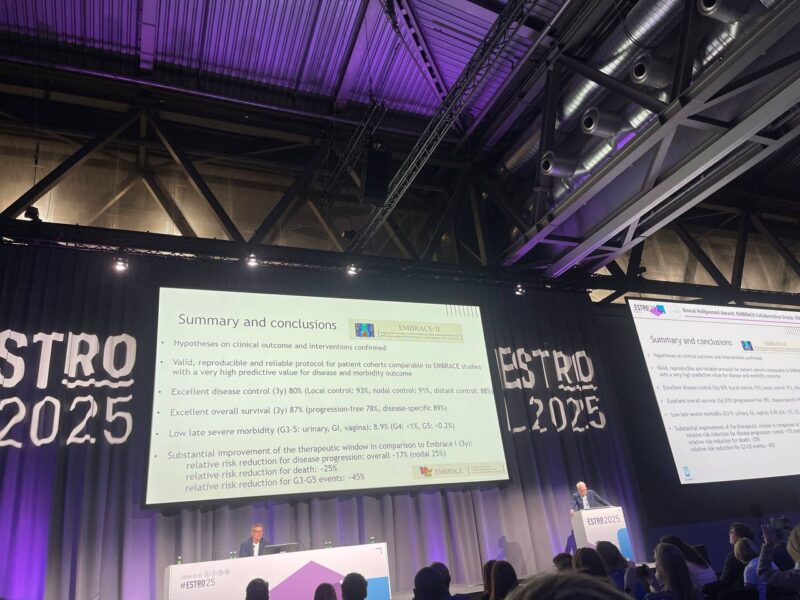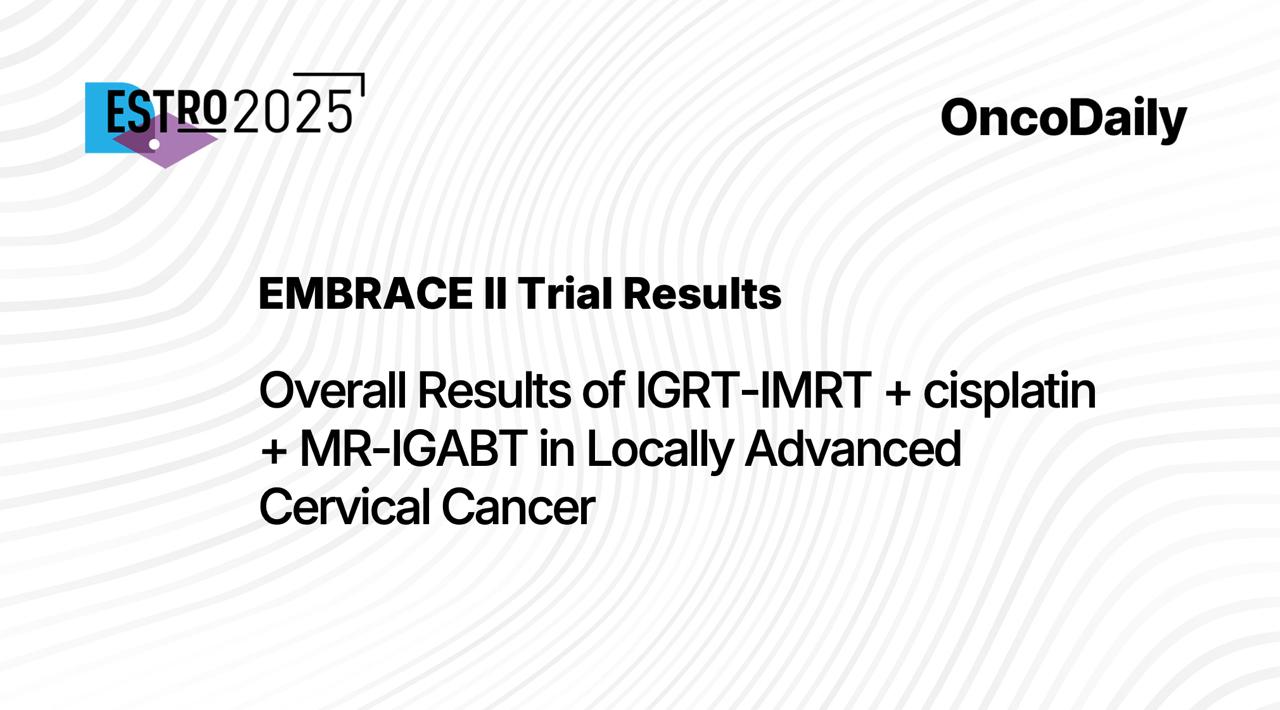Fresh from the stage at ESTRO 2025! Prof. Richard Pötter introduced the EMBRACE-II study during ESTRO 2025, highlighting its significant contributions to the treatment of locally advanced cervical cancer and its impact on clinical outcomes.
EMBRACE II Study Overview
The EMBRACE-II study was a prospective, interventional, multicenter trial investigating advanced treatment strategies for Locally Advanced Cervical Cancer (LACC). The study involved multiple hypotheses, using MRI and PET-CT for staging, adaptive target definition, highly conformal multi-parametric treatment planning, and image-guided delivery techniques like IGRT-IMRT, LN-SIB, PAO-RT, and MR-guided adaptive brachytherapy (MR-IGABT). The goal was to assess how these advanced approaches improve clinical outcomes for patients with LACC.
Study methods and Design
A total of 1482 patients from 49 centers were included in the study, with treatment consisting of IGRT-IMRT, concurrent cisplatin (97% of patients), and MR-IGABT.
The median age of patients was 51 years, with 68% having a WHO Performance Score of 0 and 30% with score 1. Pathologically, 83% of patients had squamous-cell carcinoma, and 50% had N1 disease (positive lymph nodes). The majority of patients had stage T2 tumors, and 8.6% had M1PAO (para-aortic metastasis). The median GTV-Tinit was 37 cm³, with 74% of patients receiving IC-IS MR-IGABT.
Median follow-up: 39 months (time to event/vital status).
A total of 301 patients experienced recurrence, including 95 with local recurrence, 66 with pelvic nodal recurrence, 142 with both local and pelvic nodal recurrence, 84 with para-aortic recurrence, 120 with regional nodal recurrence, 194 with local and regional nodal recurrence, and 181 with distant metastases. The study recorded 217 deaths, with 176 of those attributed to cancer.
Late Morbidity
Late life-threatening morbidity (Grade 4) was observed in 1% of patients, with severe gastrointestinal (GI), genitourinary (GU), and vaginal complications. There were two treatment-related deaths reported.
Treatment Results
- Significant improvements in local, pelvic, and para-aortic control, with strong results in overall survival (87% 3-year, 82% 5-year).
- Disease control was excellent, showing a 3-year local control rate of 93%, pelvic control of 94%, and distant control beyond the pelvis of 93%.
- Progression-free survival was 78%, and disease-specific survival was 89%.
Morbidity and Toxicity
- Late morbidity was tracked, with a total of 170 late events. The highest incidents were related to gastrointestinal (GI) and urinary issues, with a focus on Grade 3-5 complications.
- Late G3-G5 morbidity occurred in 8.9% of patients, with urinary toxicity being the most prevalent.
Comparisons with EMBRACE I:
When comparing EMBRACE II with EMBRACE I, the results showed improved disease control and survival outcomes, especially for high-risk patients (T4, T3, N2).Significant reduction in late toxicity (G3-G5) was observed, with overall risk reduction in disease progression and death, as well as a notable decrease in G3-G5 complications.
Key Takeaways
- EMBRACE II confirmed hypotheses regarding treatment protocols and demonstrated substantial improvements in clinical outcomes and disease control.
- The treatment protocol, which included advanced radiation therapy techniques and integrated chemotherapy, proved to be effective while maintaining manageable toxicity rates.
- EMBRACE II is now considered the new standard of care for locally advanced cervical cancer, especially in high-risk groups, showing significant improvements in both disease control and the reduction of late-stage toxicity


About ESTRO 2025
ESTRO 2025 brings together around 7,000 participants from over 80 countries, showcasing the latest research in clinical radiation oncology, radiobiology, medical physics, technology, and brachytherapy. Leading doctors and scientists from around the world present groundbreaking findings, in line with the conference theme: “Transformative innovation through collaboration”. ESTRO 2025 is the annual congress of the European Society for Radiotherapy and Oncology (ESTRO), an organisation dedicated to advancing cancer treatment through radiotherapy and multimodal approaches. ESTRO promotes education, science, and research and advocates for universal access to radiotherapy. With nearly 10,000 members worldwide, it supports radiation oncology professionals and the broader oncology community in their daily practice.
Read ESTRO 2025 Updates on OncoDaily.

